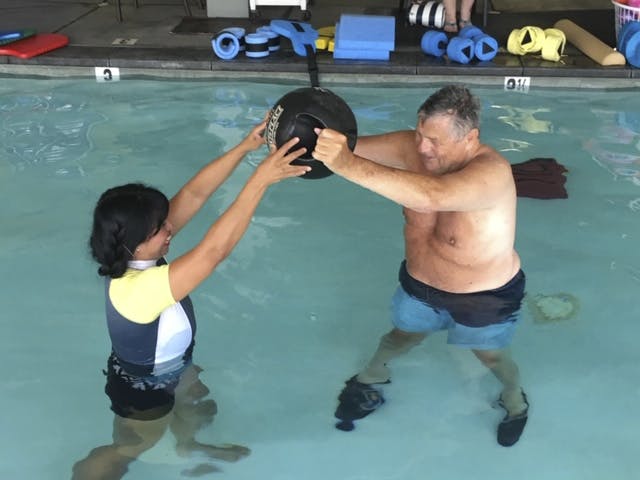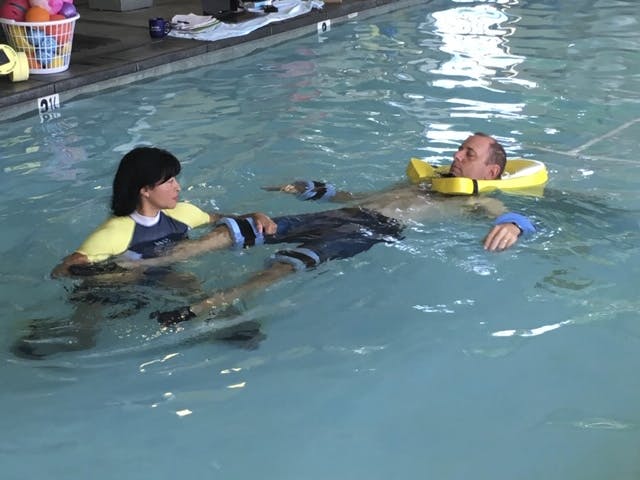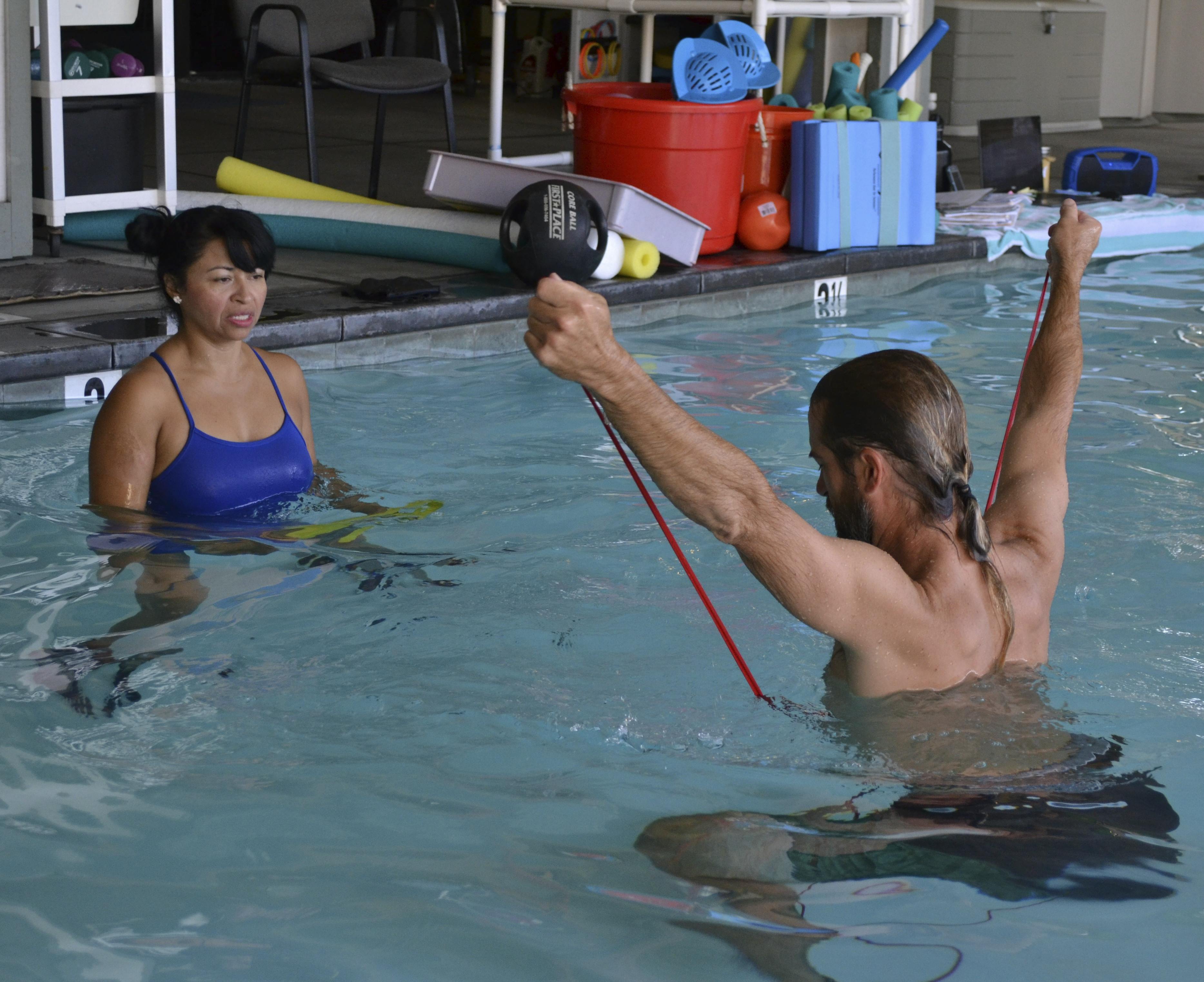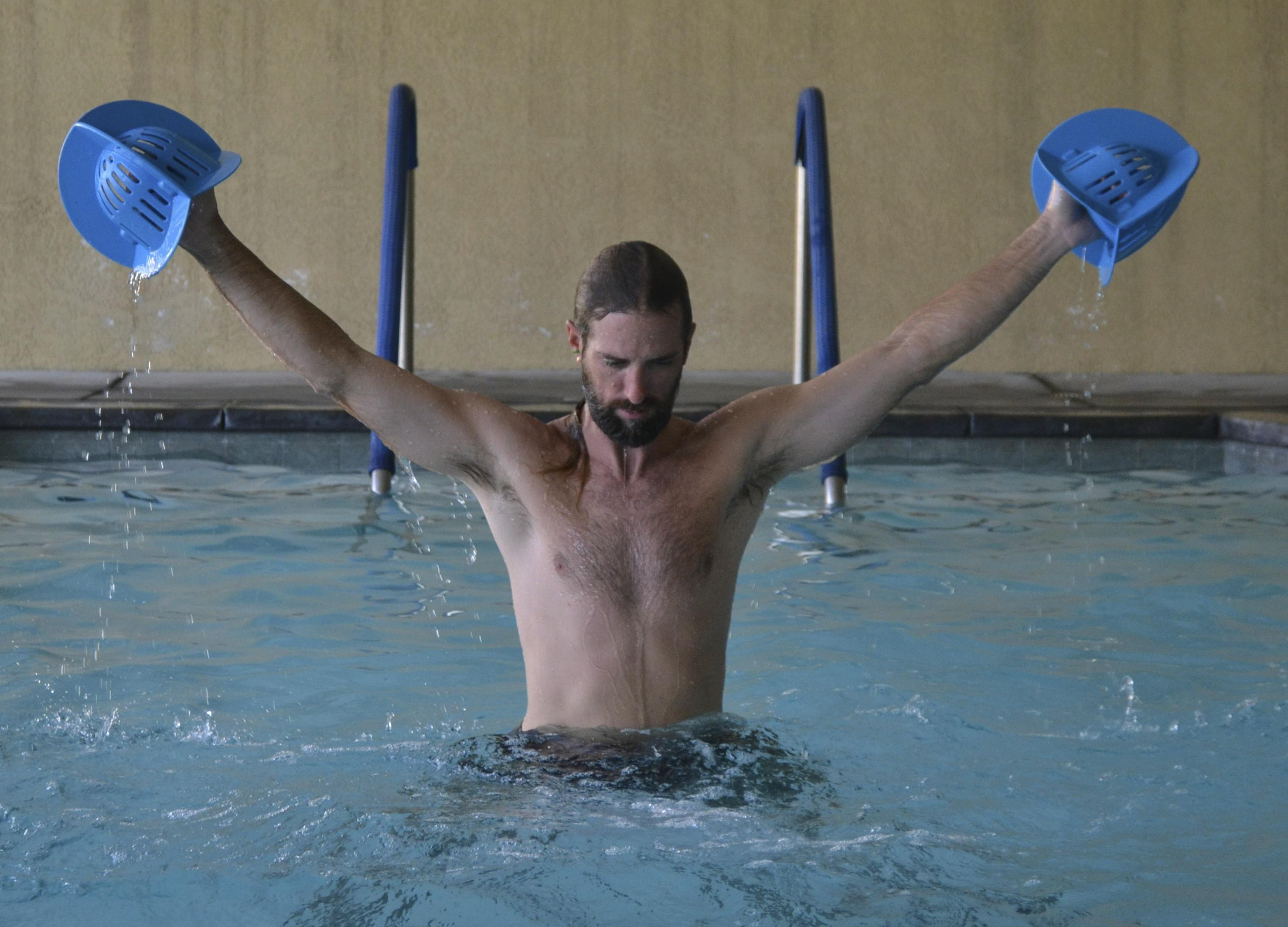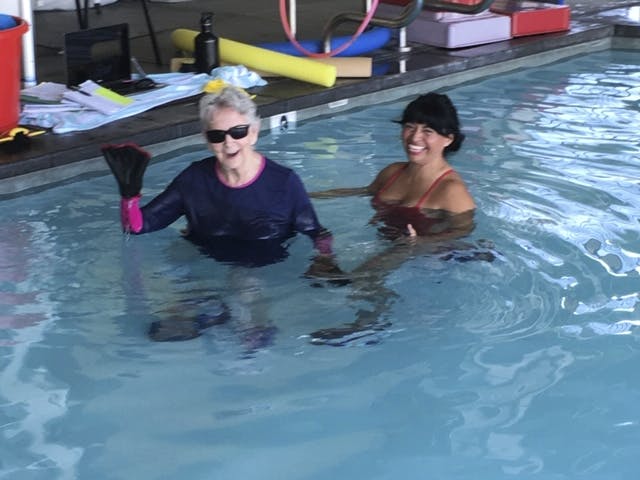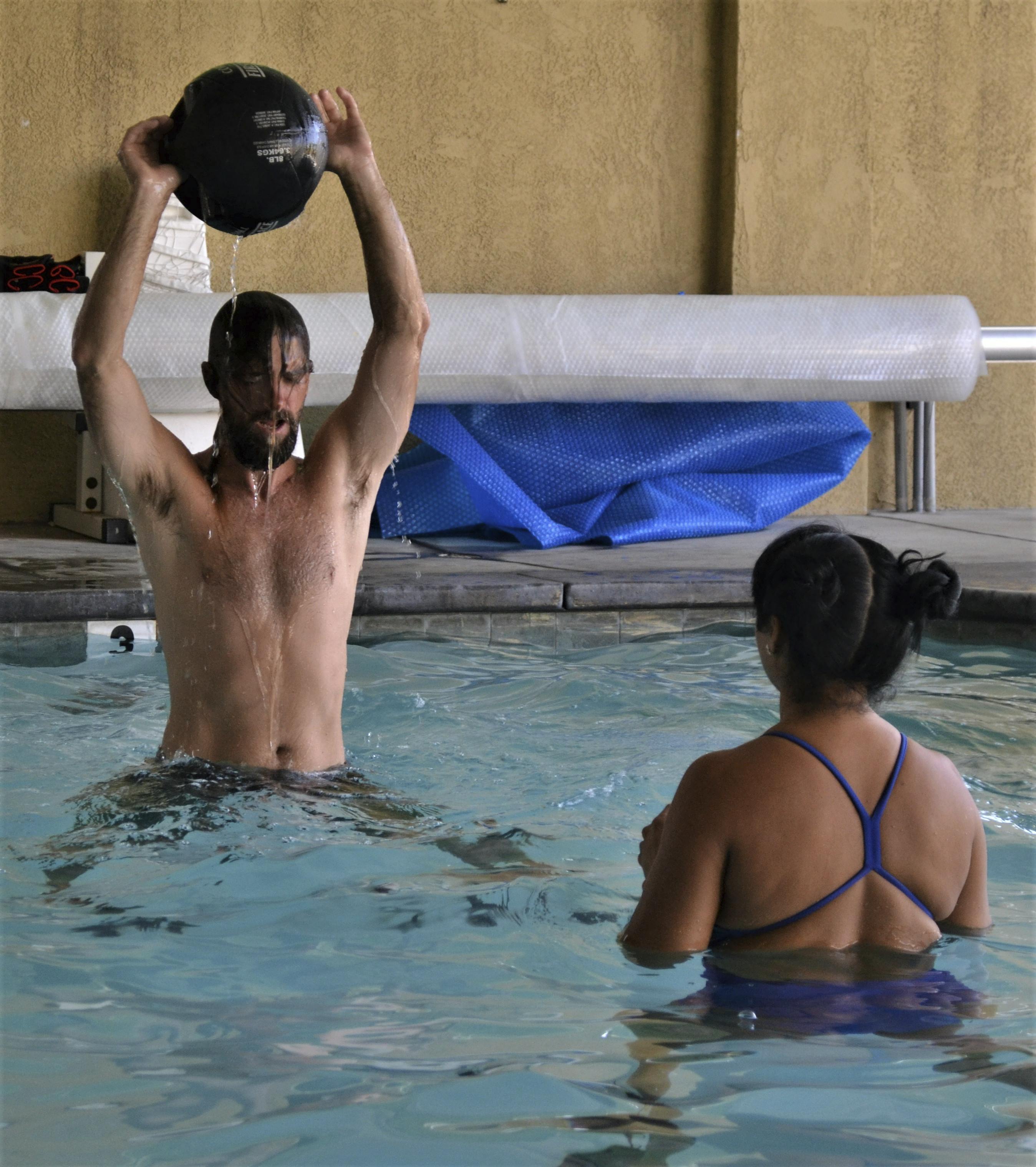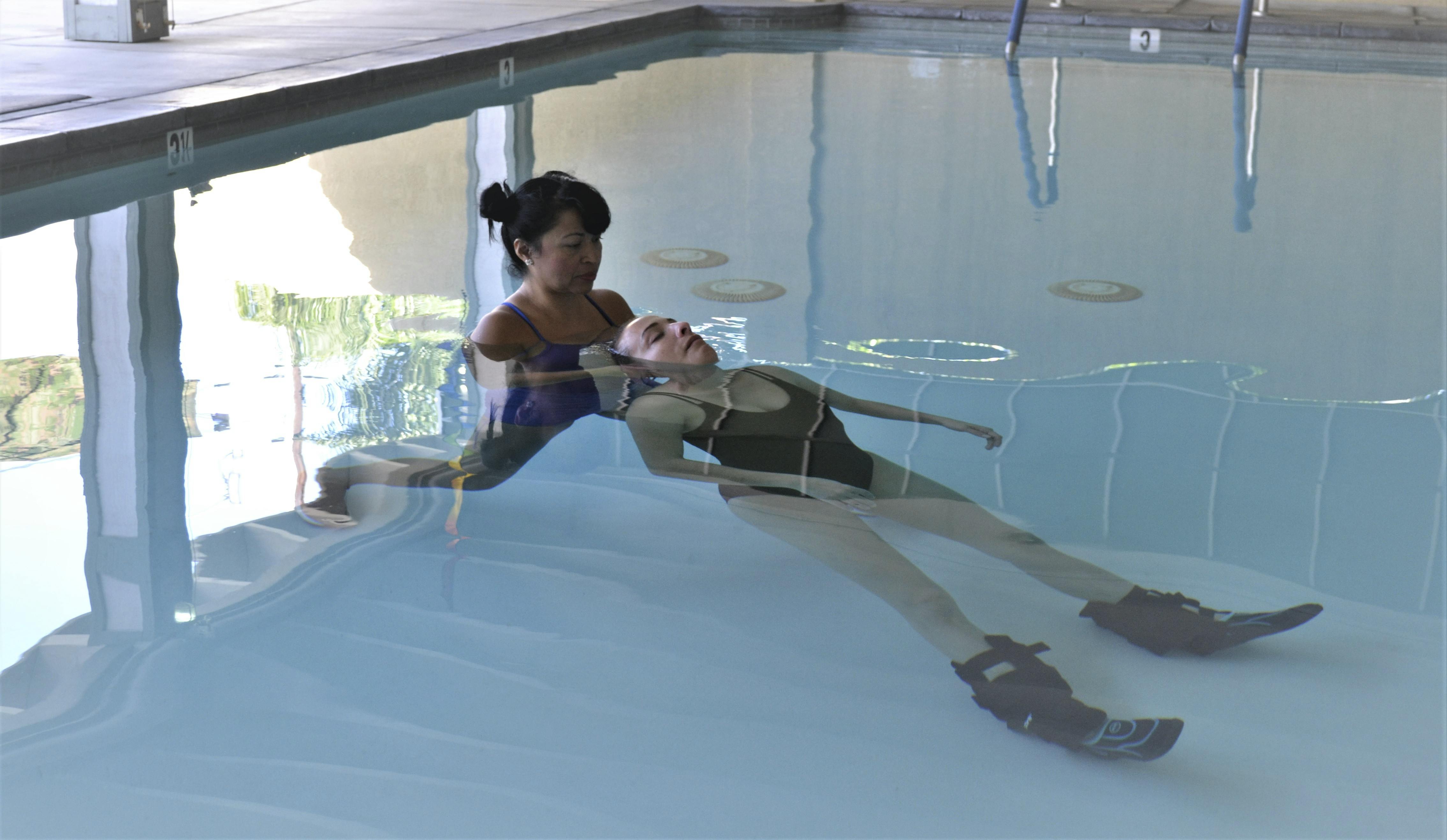Aquatic Therapy promotes healing for patients by:
- Gently increasing ROM and strength
- Improving impaired sensation
- Improving balance and proprioception
- Improving cardiovascular and muscular endurance
How our saline Aquatic Therapy Pool differs from others
- Saline conditioner is gentler on your skin and swimwear than regular chlorine
- Pool is heated between 88 and 92 degrees
- Therapy pool is outdoors, covered and sheltered from the elements using wind and sun shades
- No musty, chlorine smell
- Clean showers and changing area provided
- Thermal swim jackets available for extra warmth when necessary
Aquatic Therapy Programs
- Performed by a licensed Physical Therapist or licensed Physical Therapist Assistant specializing in Aquatic Therapy
- Rehab programs are covered by insurance, when prescribed by your physician
- Therapy programs for pre and post op conditioning and rehab
- Aquatic therapy individually designed to meet your rehab goals
- Physician Release Form required if you are pregnant or have a history of health restrictions
- Physician consultation is recommended prior to participation in any exercise program
- Aquatic Therapy is scheduled by appointment
Aquatic Therapy Program Frequently Asked Questions
(Click the questions for the answers)
What is the difference between aquatic physical therapy and a community-based aquatic program?
Aquatic physical therapy is evidence-based therapy performed in water and used to treat cardiopulmonary, neuromuscular and musculoskeletal impairments. It includes individualized evaluations and specific treatment plans with measurable goals and functional outcomes. Community-based aquatic programs use the skills of individual who may have training to teach water exercise in a group setting to promote wellness and fitness.
What are some common diagnoses and benefits from treatment using water?
Water treatment with a physical therapist can decrease muscle spasms and promote relaxation for neurological conditions as well as decrease pain for those with arthritic joints, healing fractures and chronic pain conditions. Aquatic treatment can decrease joint compressive forces, allowing ease of joint mobility and range-of-motion for pre-natal mothers, post-surgical patients and individuals with orthopedic injuries and back pain. It can also improve range-of-motion, muscular strength and endurance and cardiovascular conditioning at any level from athletes to those with industrial or traumatic injuries.
What techniques are used in aquatic physical therapy?
Traditional activities, which are similar to those performed on land, focus on applying the special properties of water to therapeutic exercise, gait/balance training, cardiovascular exercise, PNF (flexibility training) and functional mobility training. Halliwick combines knowledge from fluid mechanics, neurophysiology, psychology, pedagogy and sociology to therapeutically treat patients. Bad Ragaz facilitates muscle re-education, strengthening, spinal traction/elongation and inhibition of spasticity (stiff or rigid muscles). Watsu® is a wellness technique or massage incorporating shiatsu and focusing on stretching.
What is buoyancy and how does it benefit aquatic physical therapy?
Buyoyancy is the upward force that keeps things afloat in water. Buoyancy decreases the effects of gravity, provides weight relief with less contact between bones of a joint, lessens pain, assists with movements that are difficult on land, reduces the fear of falling by providing increased reaction time and promotes increased reaction time.
How does buoyancy affect the direction of movements in water?
Movements toward the surface are considered to be buoyancy-assisted exercises. Movements directed toward the bottom are buoyancy-resisted exercises. Movements performed parallel to the bottom of the pool are buoyancy-supported exercises.
What are some of the benefits of hydrostatic pressure?
Hydrostatic pressure, pressure exerted by liquids at rest, reduces swelling and sensitivity to touch, asists with breathing out and resists breathing in, which helps to strengthen respiratory muscles.
What should a person look for when starting aquatic physical therapy?
Locate a therapist or facility that offers aquatic physical therapy. Since there currently is no certification for aquatic physical therapy, be sure to ask about the therapist's education and training. The evaluation should be completed on land and established functional goals should be land-based. The chosen techniques should be based on the individualized evaluation.

